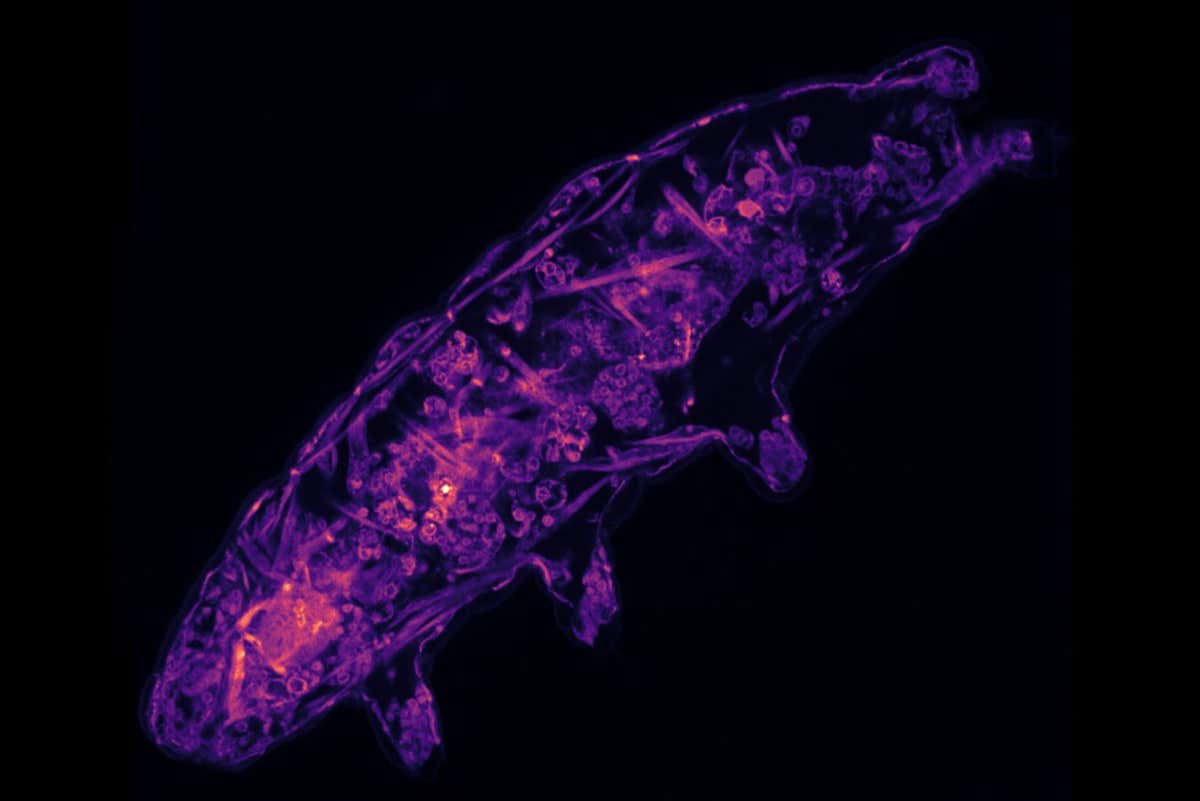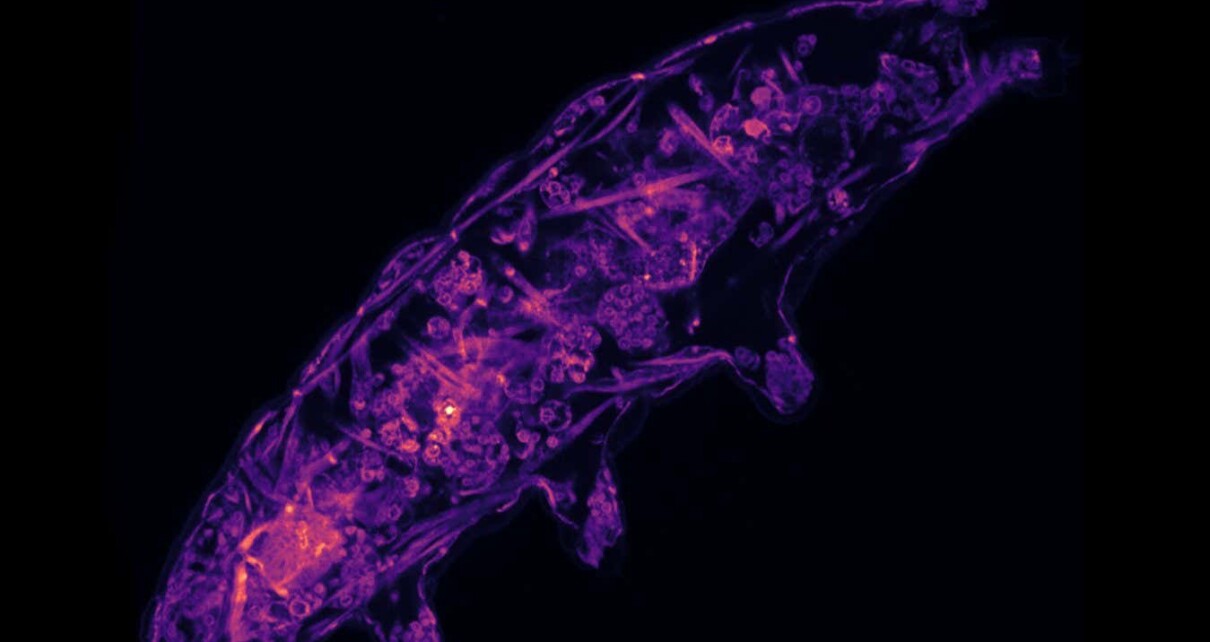[ad_1]

A tardigrade seen with a fluorescence microscope, with a fluorescent marker highlighting some of its organs
Smythers et al./PLoS ONE (CC-BY 4.0)
Tardigrades are renowned for their ability to withstand extreme environments – now we know how they do it. Tiny molecular sensors in their cells can detect when they produce too many damaging molecules called free radicals, triggering a dormant state.
Sometimes called water bears, tardigrades are eight-legged, microscopic invertebrates that can be found around the world. In adverse conditions, such as freezing temperatures or intense radiation, the critters shrivel up into a dry ball called a tun and enter a state of deep hibernation.
“Tardigrades don’t thrive under extreme conditions, but they can overwinter them,” says Derrick Kolling at Marshall University in West Virginia. “We wanted to understand how they’re able to go into that.”
To investigate, Kolling and his colleagues exposed tardigrades to high levels of hydrogen peroxide, sugar or salt, or −80°C (−112°F) temperatures to induce tuns. As a result of these stresses, the tardigrades produce harmful, highly reactive molecules called oxygen free radicals.
The free radicals then go on to react with other molecules, says team member Leslie Hicks at the University of North Carolina at Chapel Hill. Crucially, the team found that the free radicals oxidise an amino acid called cysteine, one of the building blocks of proteins in the body. These reactions cause proteins to change their structure and function, signalling the onset of the dormant state.
In experiments where cysteine oxidation was prevented, the tardigrades weren’t able to enter a tun state. “Cysteine acts like a kind of regulatory sensor,” says Hicks. “It allows tardigrades to feel their environment and react to stress.”
When conditions improved, the team found that cysteine was no longer oxidised, which told the tardigrades to wake up from their tuns.
“Whether this is a universally conserved protection mechanism and whether this is conserved across tardigrade species are really important questions,” says Hicks. The answers may help us better understand the ageing process and even how to achieve long-term space travel, she says.
Topics:
[ad_2]
Source link




